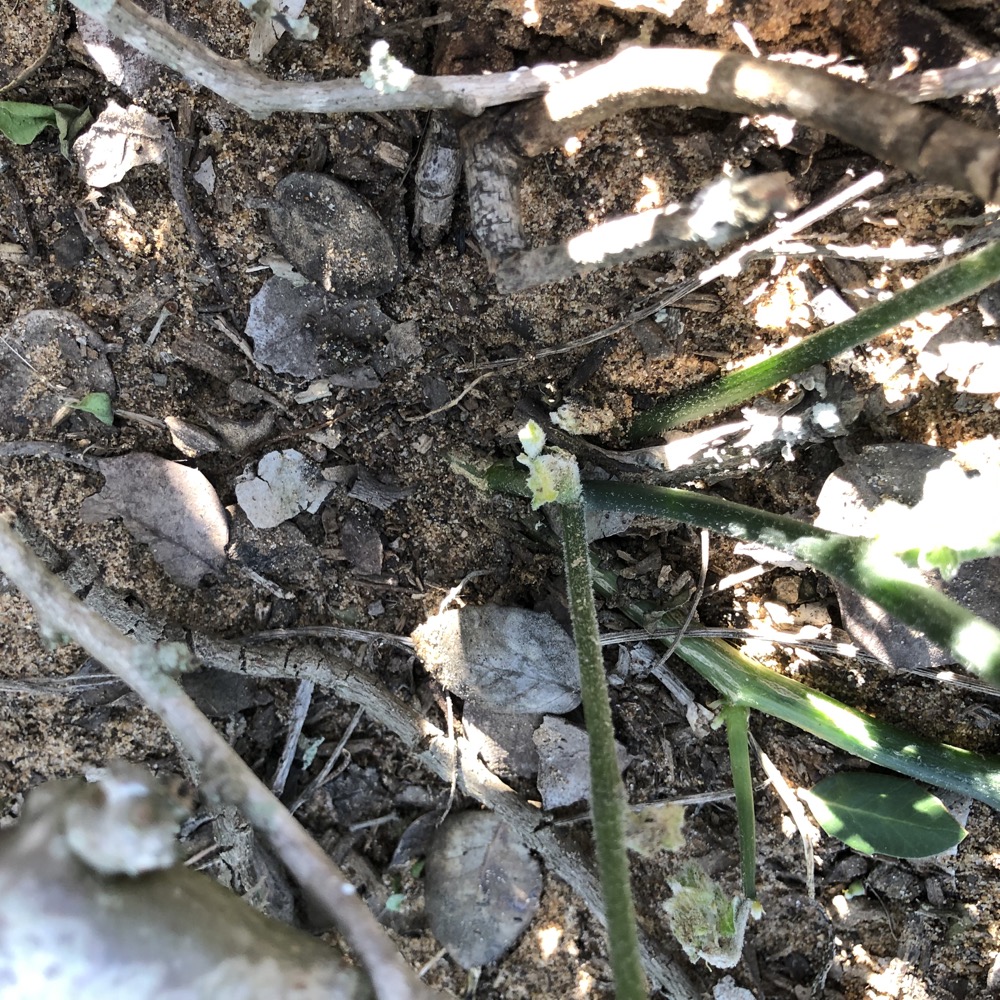 NPS Photo/Andrew Rosales – Vines emerging from the hidden manroot in the ground.
NPS Photo/Andrew Rosales – Vines emerging from the hidden manroot in the ground.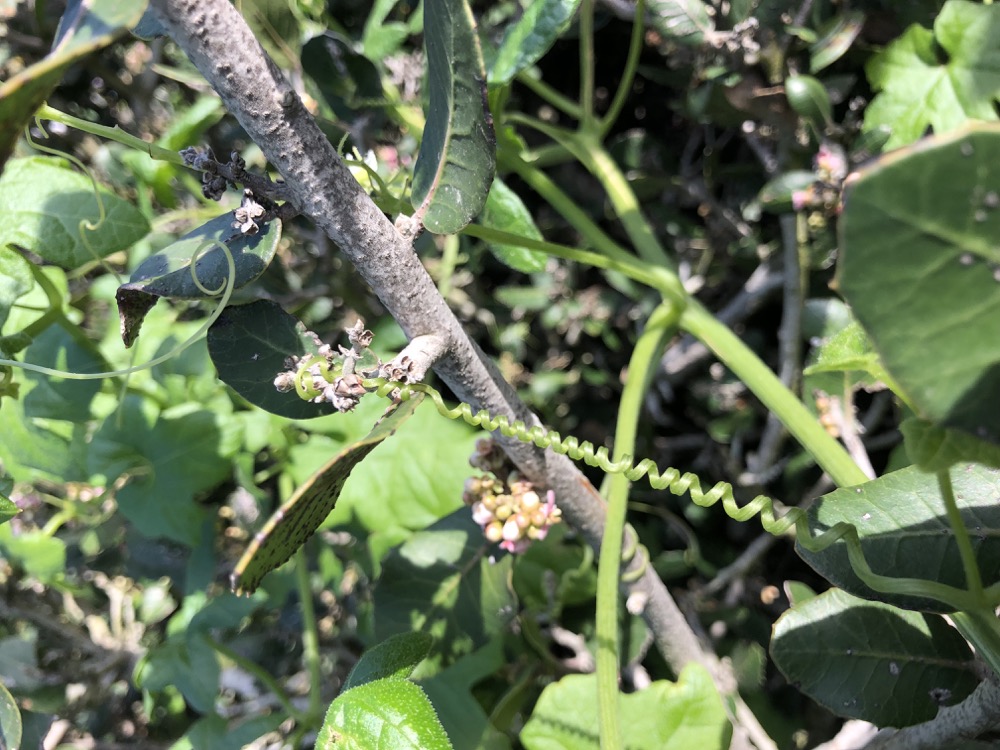 NPS Photo/Andrew Rosales – Tendrils from the Wild Cucumber grab onto a Lemonade Berry plant.
NPS Photo/Andrew Rosales – Tendrils from the Wild Cucumber grab onto a Lemonade Berry plant.The Wild Cucumber has adapted to use these rains to its advantage and climbs quickly up and onto the tops of other species to catch the sun with its five-lobed palmate leaves. These are the photosynthesis factories that produce more food for the plant as it continues to spread its vines and begin to flower. This species has both male and female flowers on the same plant. This type of plant is called Monoecious. The female flowers are solitary and found at the base of the specialized stem that supports the male flowers that form in clusters and grow outward from this stem. This allows for self-pollination to occur.
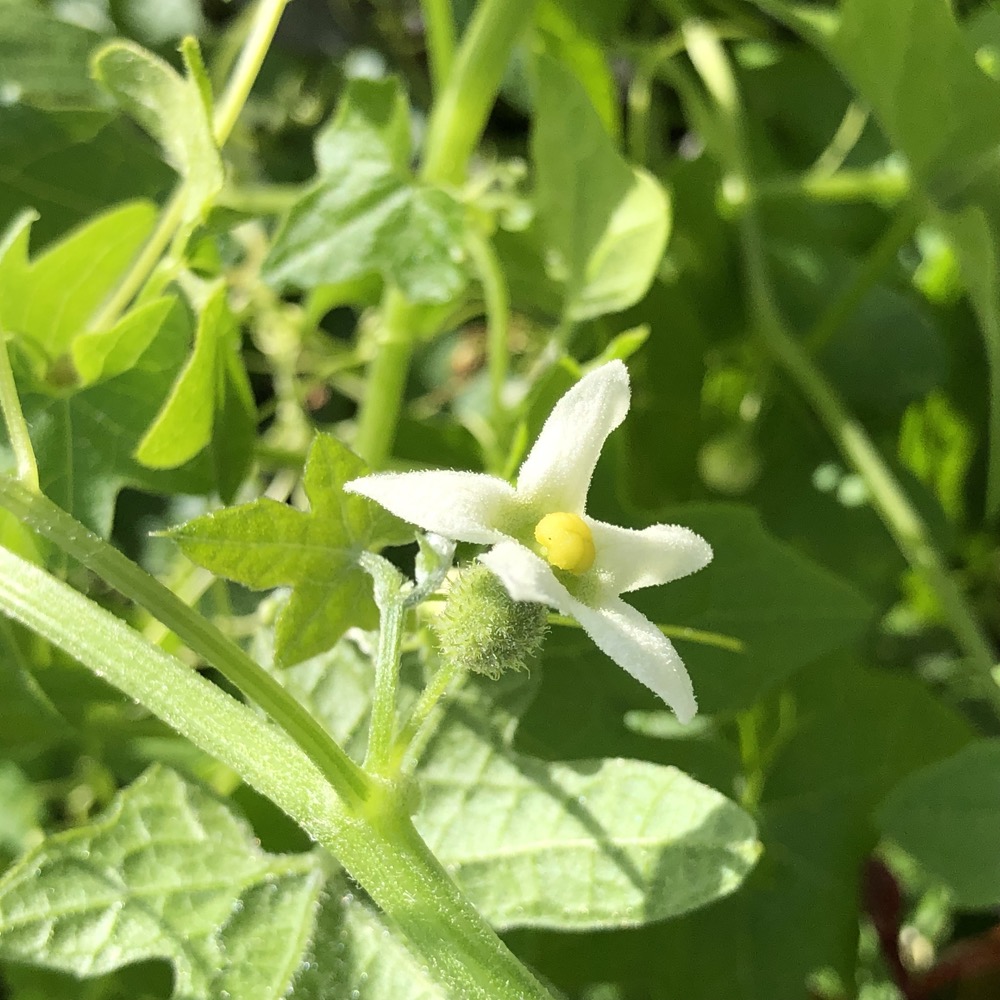 NPS Photo/Andrew Rosales – Female flower of the Wild Cucumber.
NPS Photo/Andrew Rosales – Female flower of the Wild Cucumber.
NPS Photo/Andrew Rosales – Male flowers of the Wild Cucumber.
The seed pods, or fruit of the Wild Cucumber, are about the size of a fist and are covered in spikes. These spikes become more rigid as the fruit ripens, becoming very sharp to the touch. Wild Cucumber produces many seedpods that contain at least four seeds, but can have more depending on the size of the full-grown fruit. The seeds are held in four chambers and when the fruit ripens, it pops open to spread the seeds onto the surrounding soil.
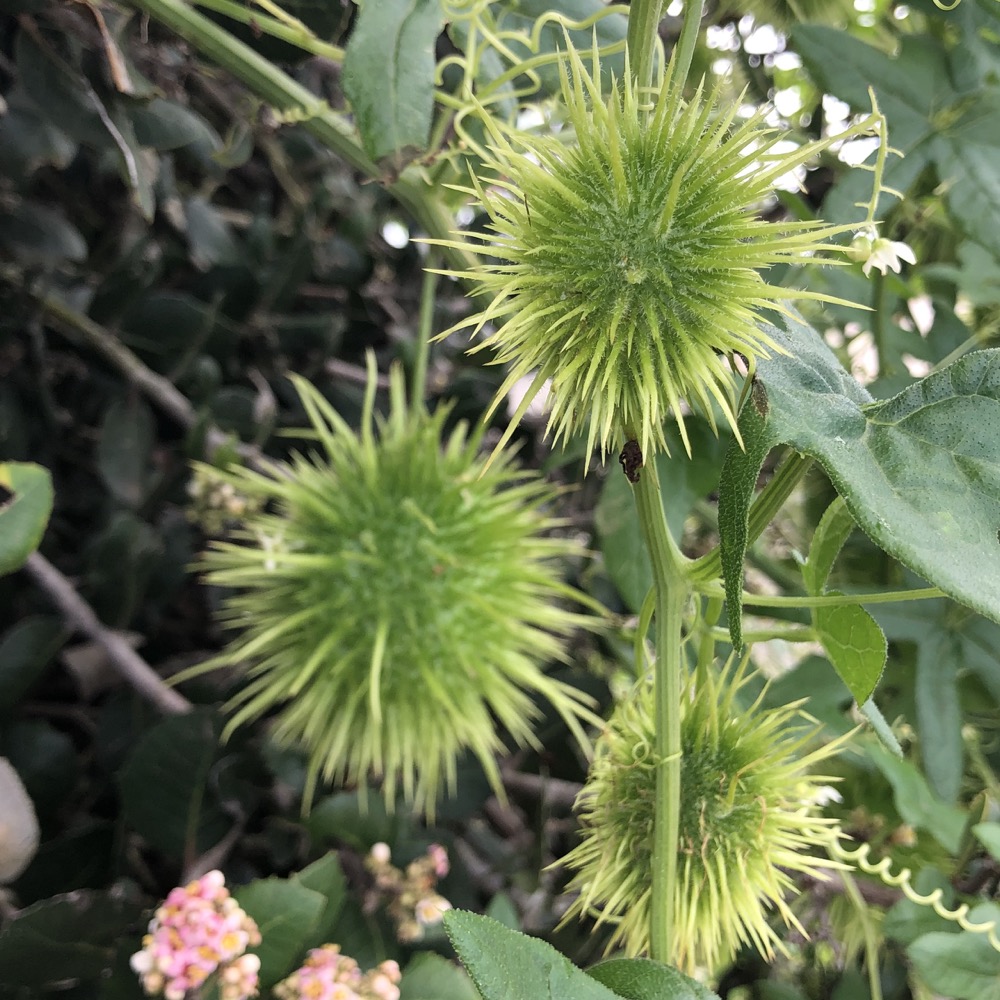 NPS Photo/Andrew Rosales – A group of three seed pods hang from the Wild Cucumber vine.
NPS Photo/Andrew Rosales – A group of three seed pods hang from the Wild Cucumber vine.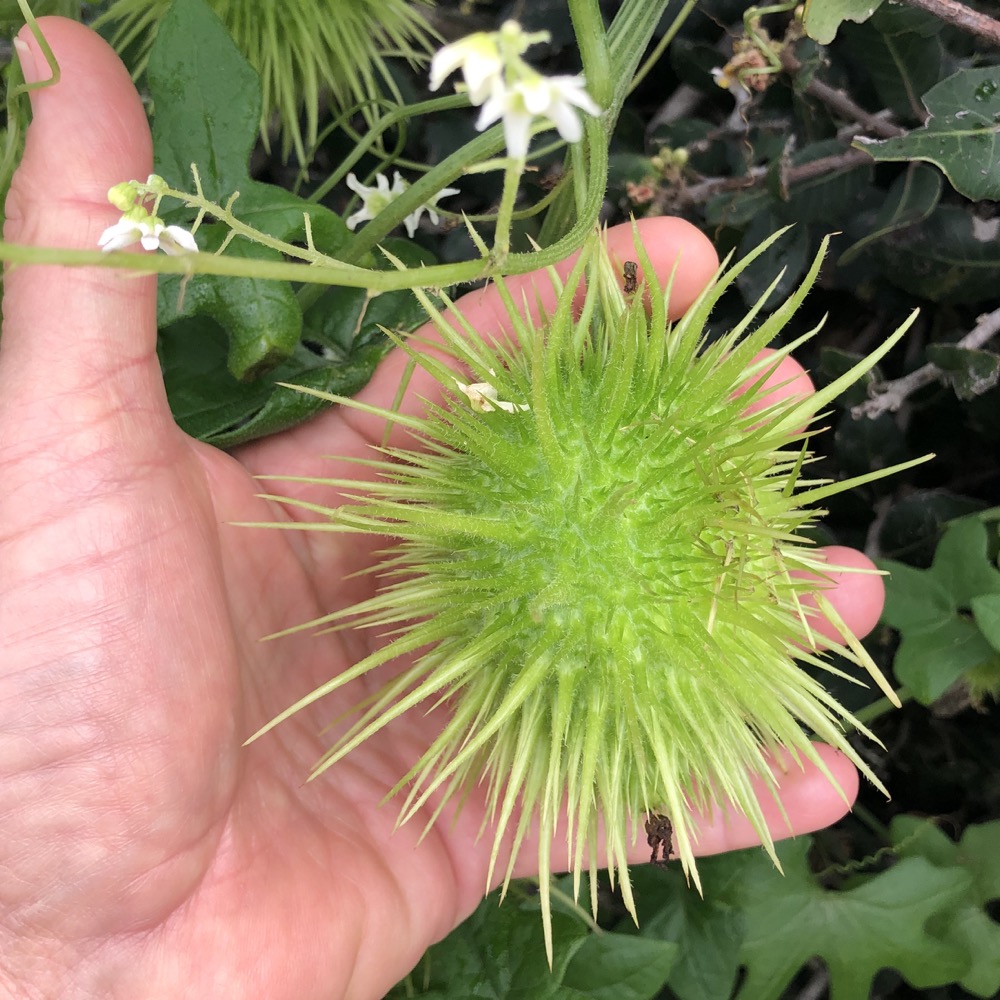 NPS Photo/Andrew Rosales – A single seed pod from the Wild Cucumber.
NPS Photo/Andrew Rosales – A single seed pod from the Wild Cucumber.So as you walk around enjoying the current blooming plants at Cabrillo National Monument, take time to notice this early bloomer. This climbing plant has blanketed some of the Coastal Sage Scrub species as it continuously spreads its vines.
